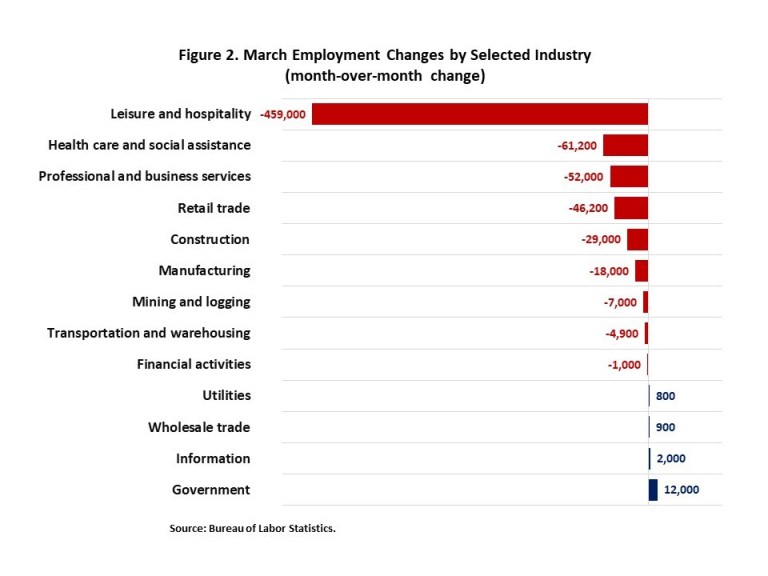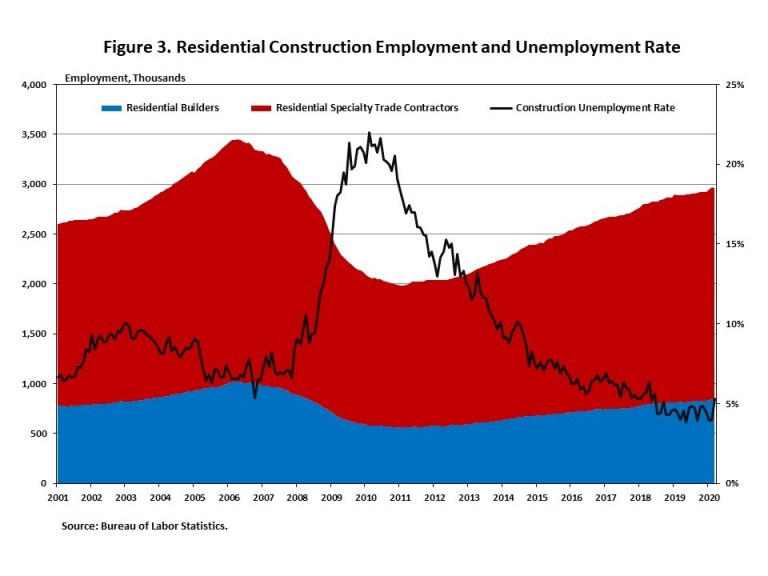The Jobless Claims Report and the Employment Situation Report and were both pretty devastating last week with more than 6 million new unemployment claims filed on top of 3 million the prior week and 701,000 jobs lost. The unemployment rate jumped nearly a full point to 4.4 percent. Jing Fu, writing in the National Association of Home Builders (NAHB) Eye on Housing Blog, says the residential construction industry received its fair share of the pain.
Employment in residential construction had been doing well, it was up by 24,100 in February, but that reversed in March, undoubtedly due to impacts from the COVID-19 pandemic, and 4,300 jobs were lost. The total loss across all construction categories was 29,000 jobs. Those losses, however, paled in comparison to the massive ones in the leisure and hospitality industry as hotels shut down, restaurants closed, and cruises were cancelled. Three other job categories also pulled back more dramatically than construction.

Residential construction employment now stands at 3.0 million in March, broken down as 844,000 builders and 2.1 million residential specialty trade contractors. On a 6-month moving average basis residential job gains have been 8,033 per month and home builders and remodelers have gained a net of 71,500 jobs over the last 12 months. Since the low point following the Great Recession, residential construction has gained 980,700 positions.

In March, the unemployment rate for construction workers rose to 5.3% on a seasonally adjusted basis, from 4.0% in February. It was the highest level since June 2018. During the past ten years, the unemployment rate for the construction sector has trended downwards and remained historically low.







